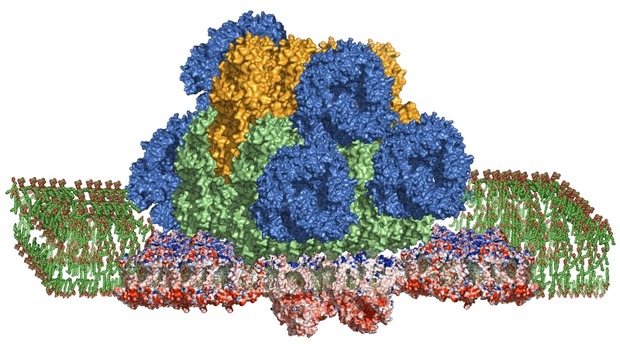Scientists solve photosynthetic megacomplex conundrum
28 Nov 2013
In an industry first, US scientists have developed a new technique which has allowed them to study a photosynthetic complex in its complete functioning state.
When sunlight hits a photosynthesising organism, energy flashes between proteins just beneath its surface until it is trapped as separated electric charges.
Three clumps of protein beneath an organisms surface – a light-harvesting antenna called a phycobilisome and photosystems I and II - may look innocuous but if the distances between them were too great or the transfers too slow, the energy would be wasted.
“One outcome of the work in the long term might be the ability to double or triple the efficiency of crop plants
PARC director Robert Blankenship
Until now scientists were unsure whether the three complexes cohered as a single megacomplex.
Previous attempts to isolate connected complexes failed because the weak links that held them together broke and the megacomplex fell apart.
However, scientists have now been able to chemically link the proteins in the megacomplex.
Stabilised by “stitches”, or crosslinks, the megacomplex was isolated in its complete, fully functional form and subjected to the full capabilities of the researchers’ labs, including tandem mass spectrometers and ultra-fast lasers.
Photosynthetic Antenna Research Center (PARC) director Robert Blankenship said: “One outcome of the work in the long term might be the ability to double or triple the efficiency of crop plants – now stuck at a 1-3%.
“We will need such a boost to feed the 9 or 10 billion people predicted to be alive by 2050.”
Scientists conducted the research using a model organism known as a cyanobacterium.
PARC research scientist Haijun Liu, PhD, proposed stitching together the megacomplex and then engineered a strain of cyanobacteria that has a tag on the bottom of Photosystem II.
The altered cells were treated with reagents that stitched together the complexes, then broken open, and the tag used to pull out Photosystem II and anything attached to it.
To figure out how the proteins were interconnected, the scientists repeatedly cut or shattered the proteins, analysing them by mass spectrometry down to the level of the individual amino acid.
“The work provides a new level of understanding of the organisation of these photosynthetic membranes and that is something that a lot of people have tried to understand for a long time,” Blankenship said.
He also stated that the crosslinking methodology and mass spectroscopy analysis could be applicable to a variety of other complexes.
“This technique might finally allow channelling supercomplexes to be identified in cases where the complex is only very weakly associated,” he said.
The research is published in the Nov. 29 issue of Science.





